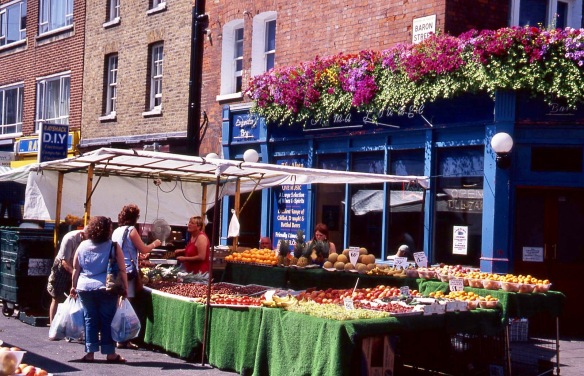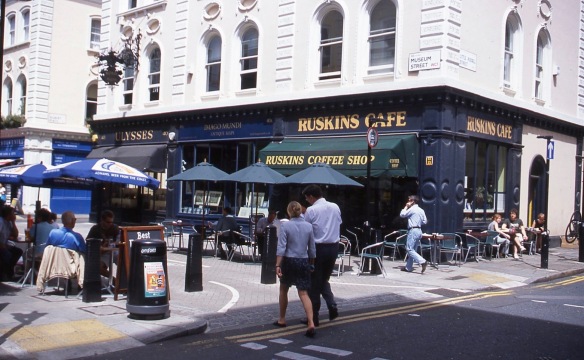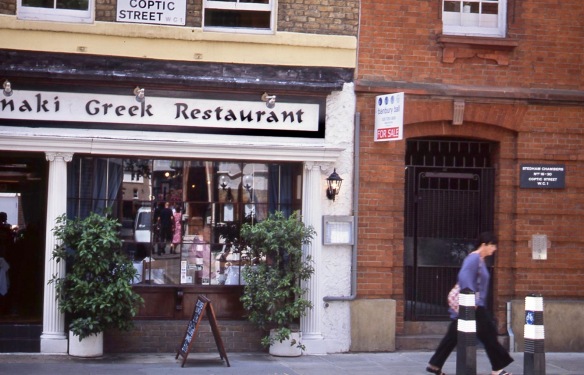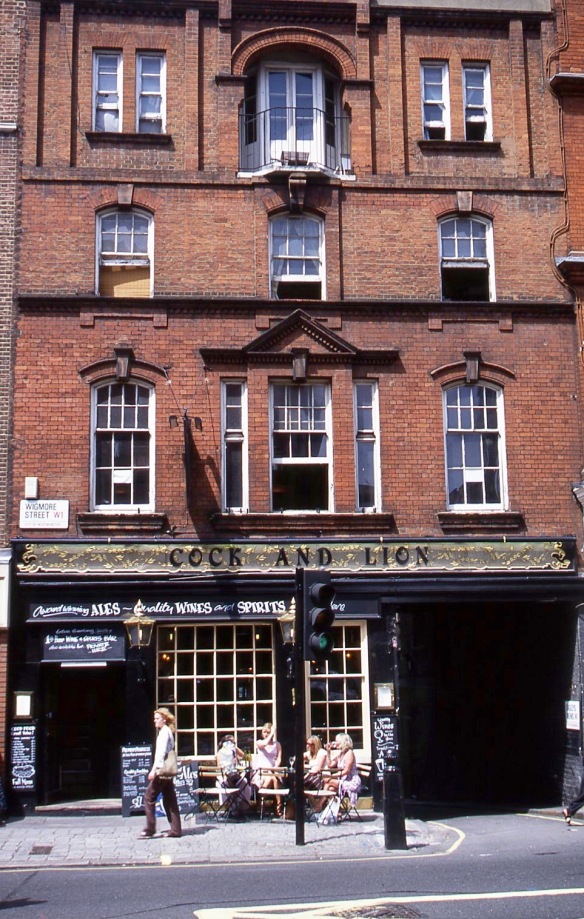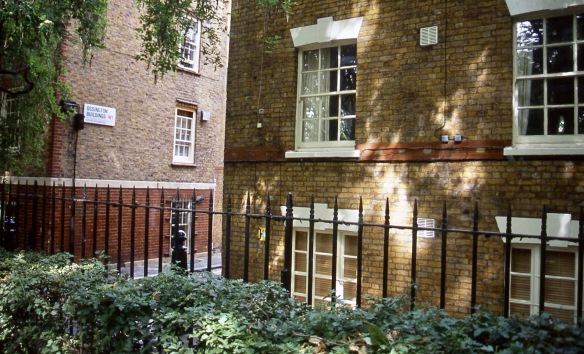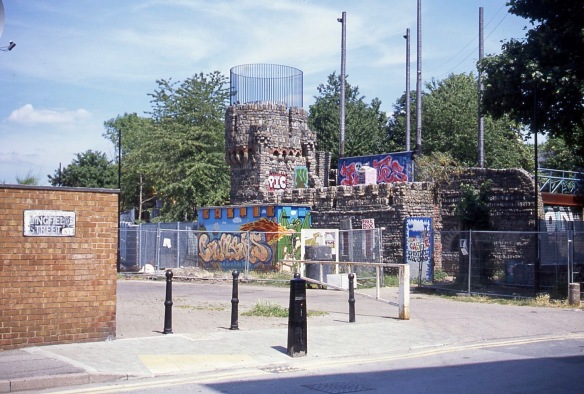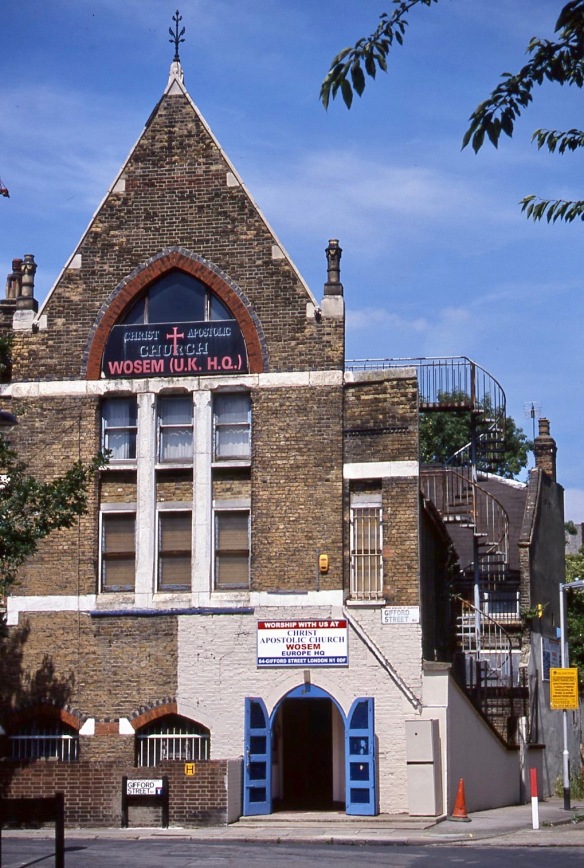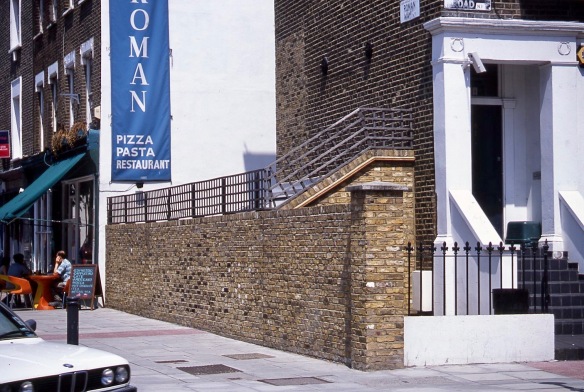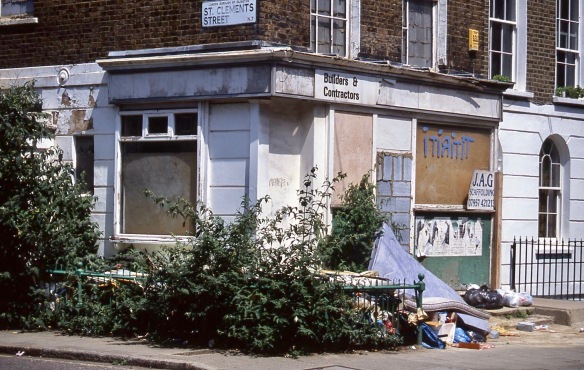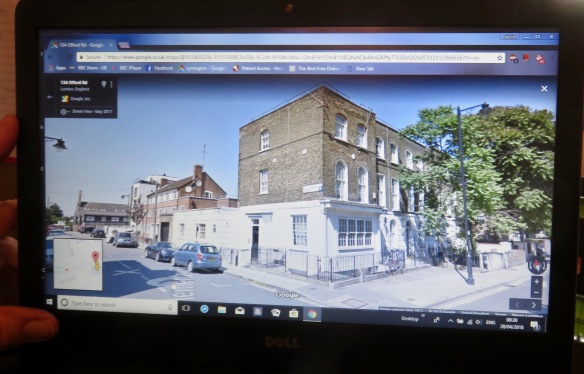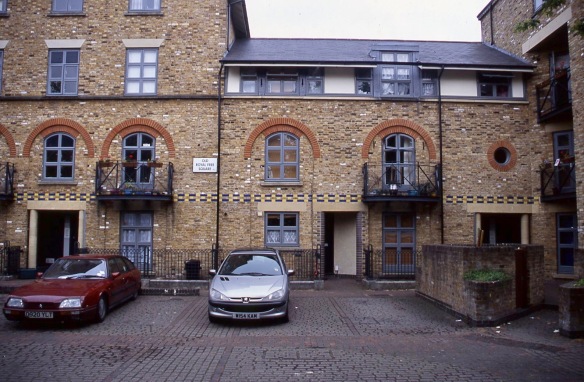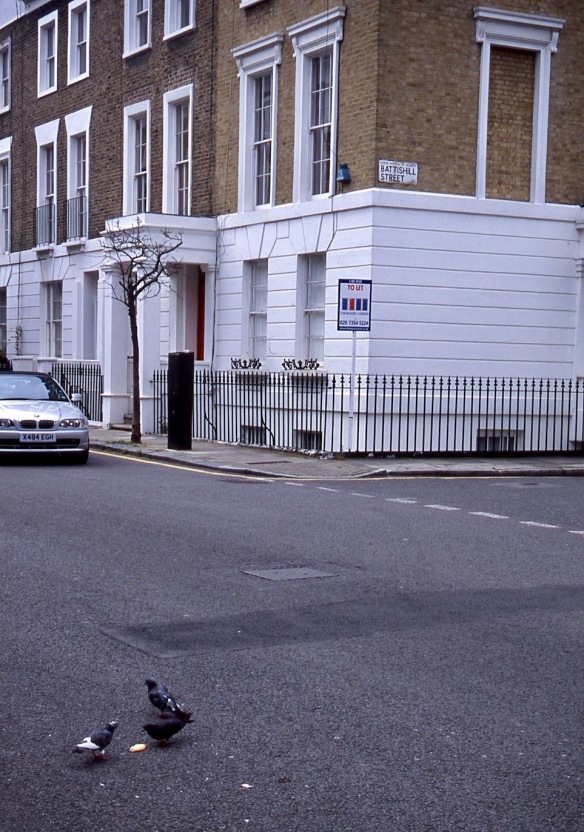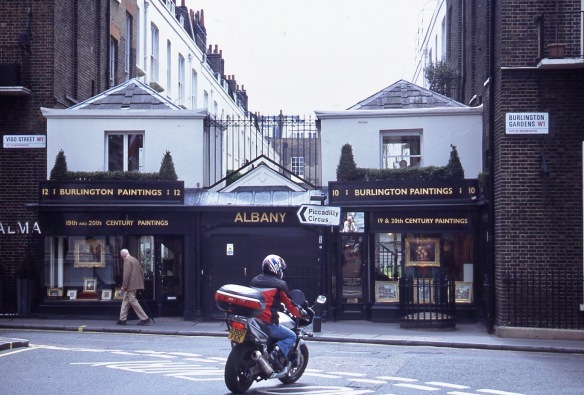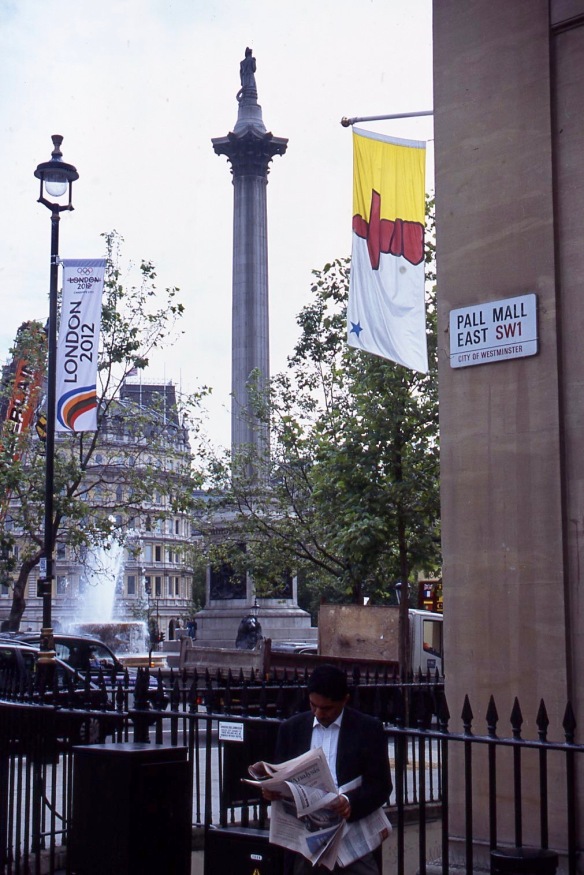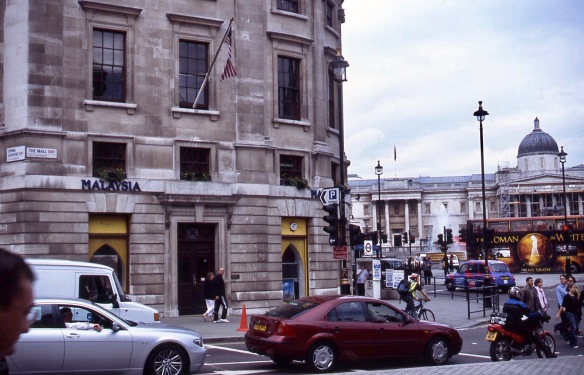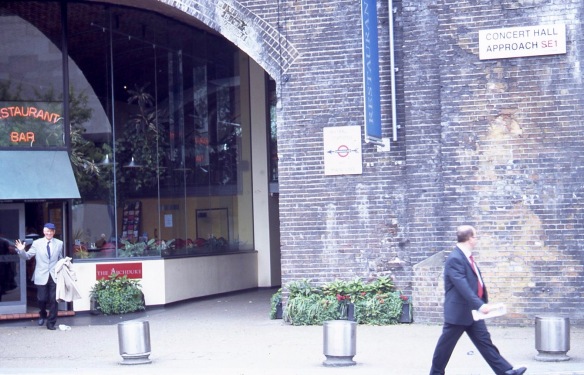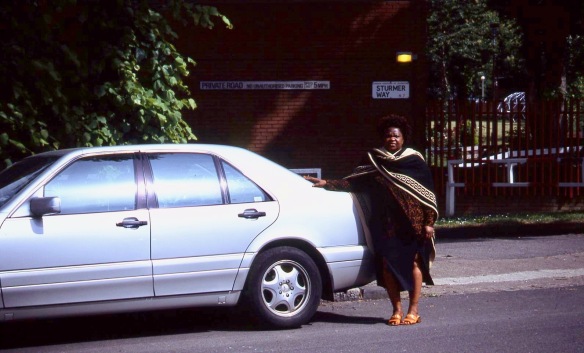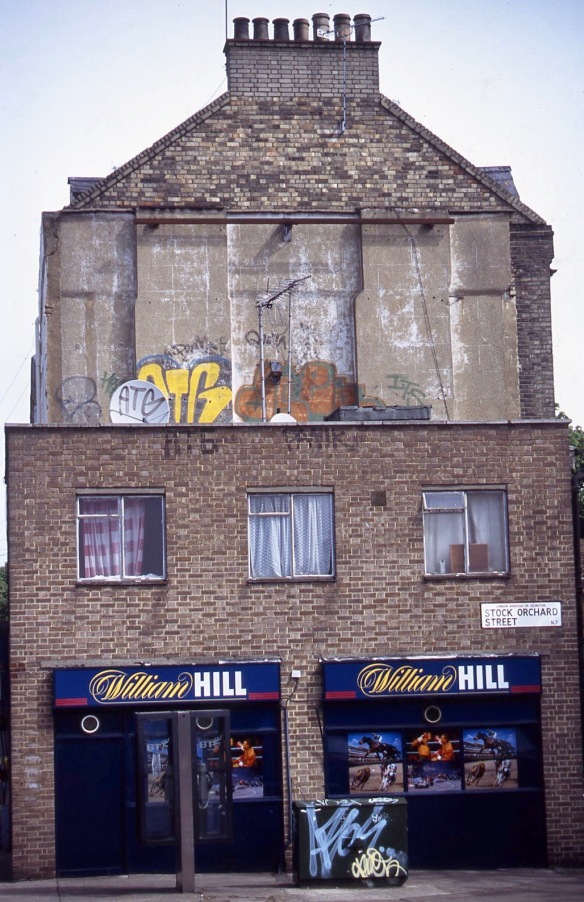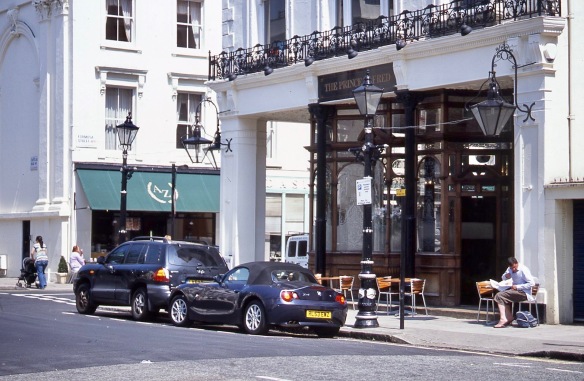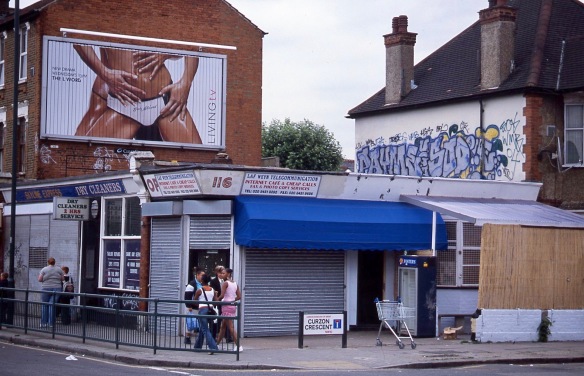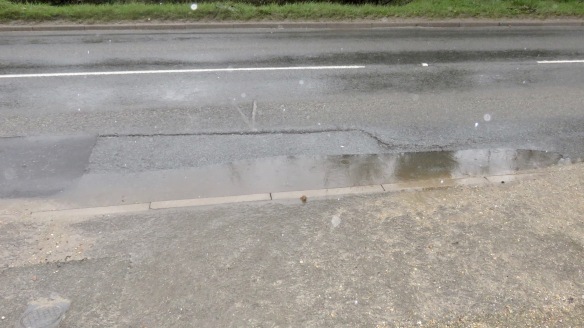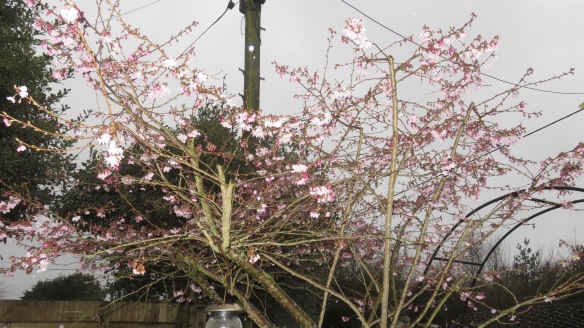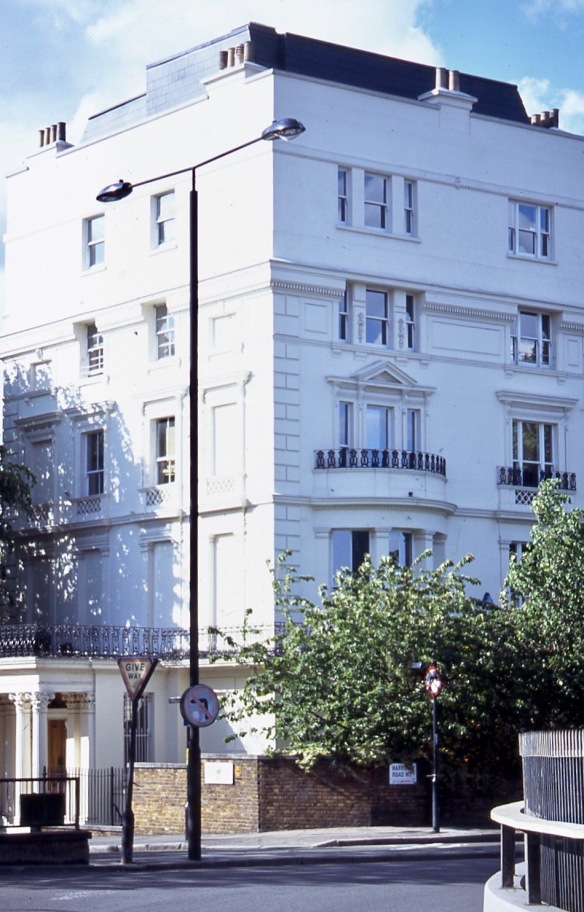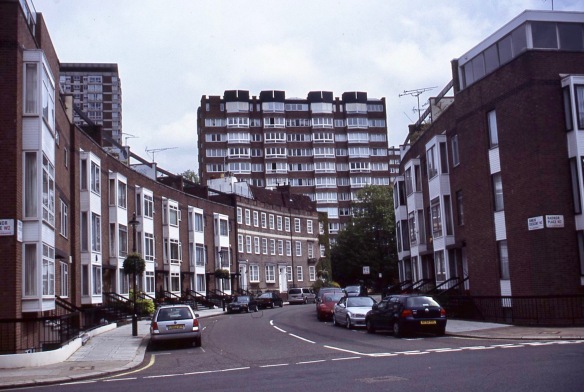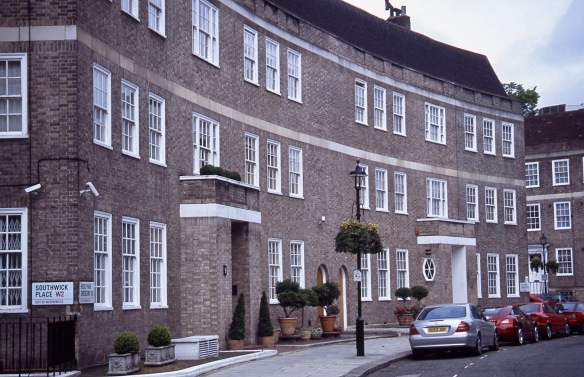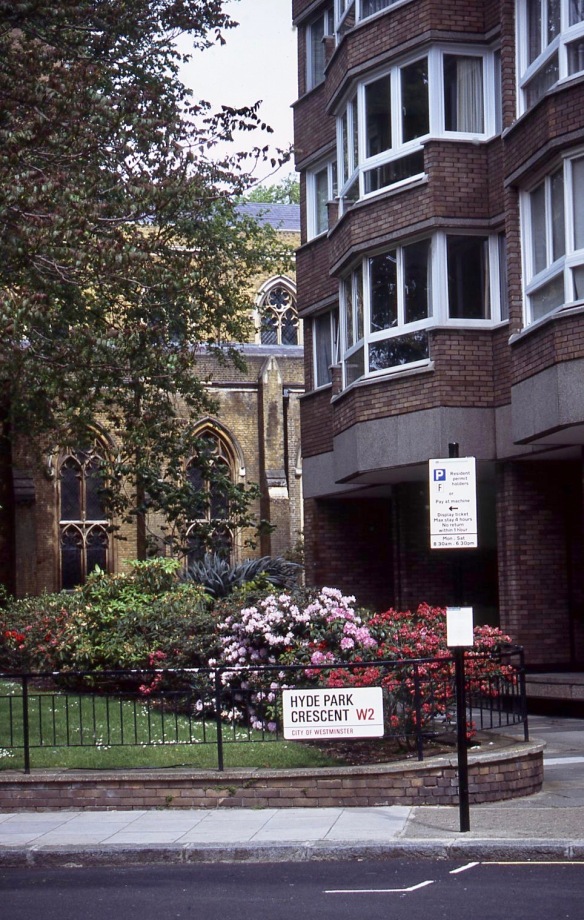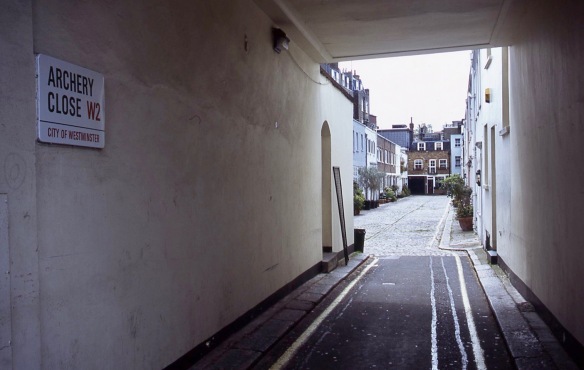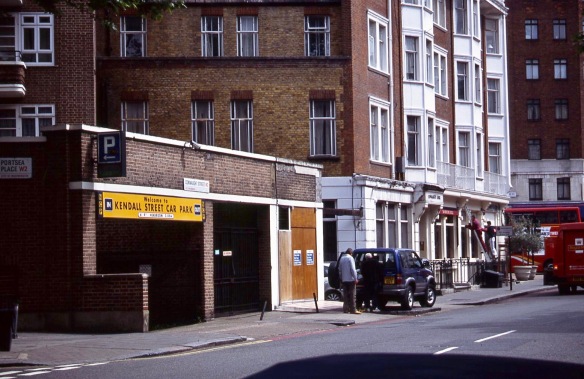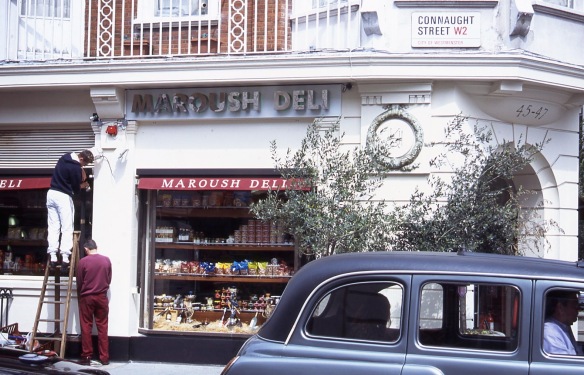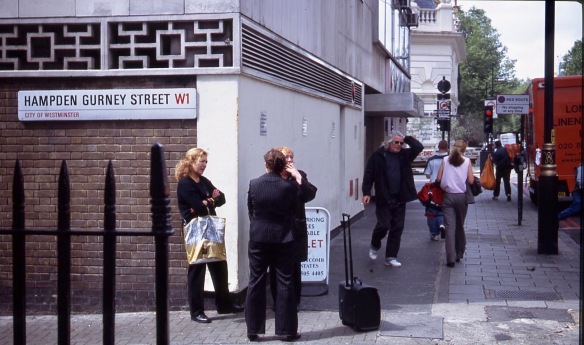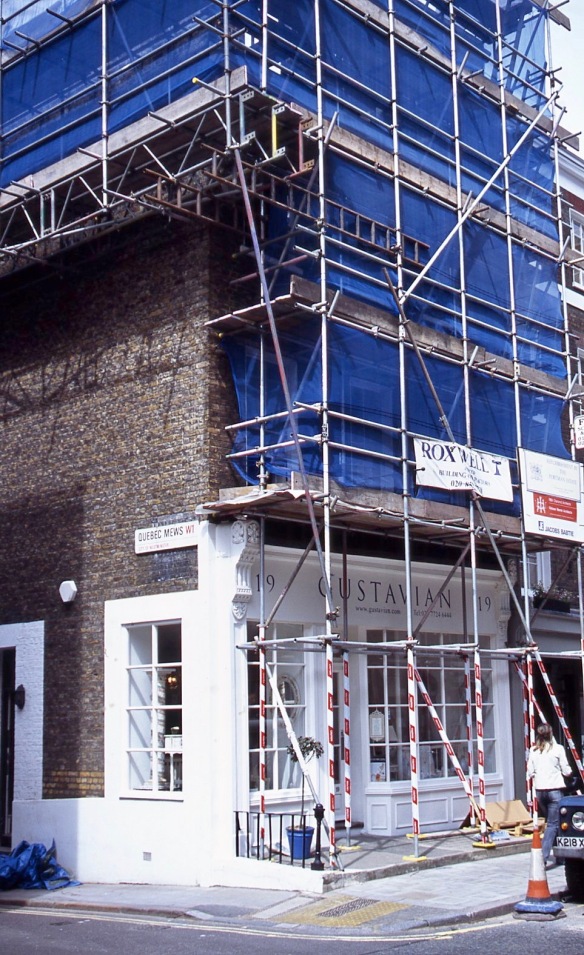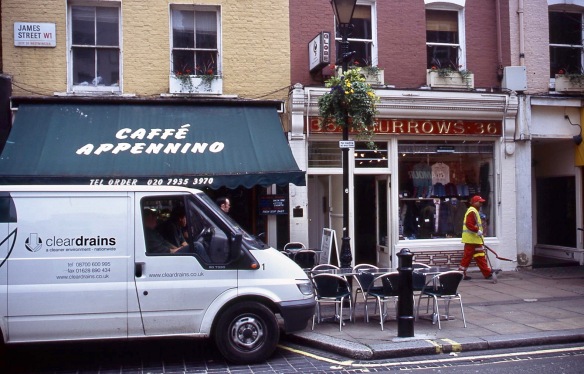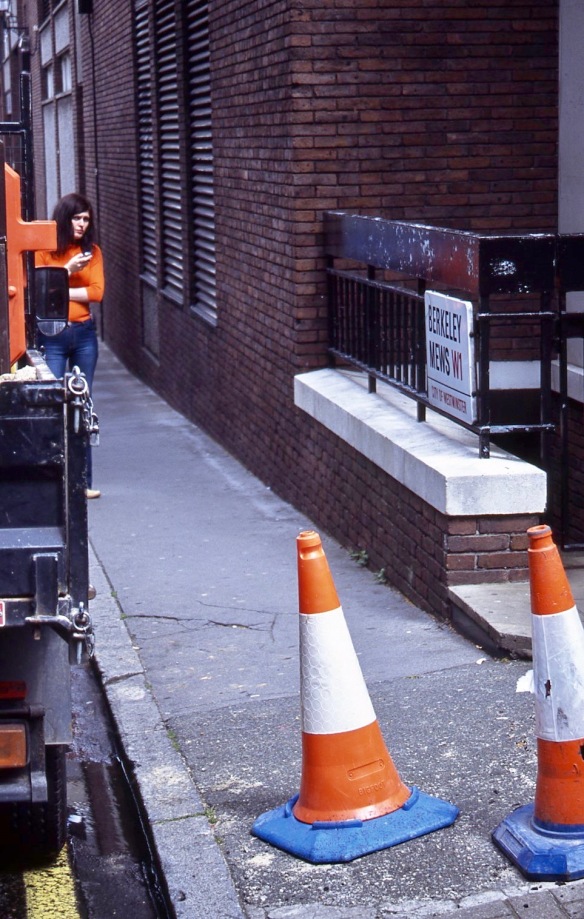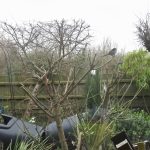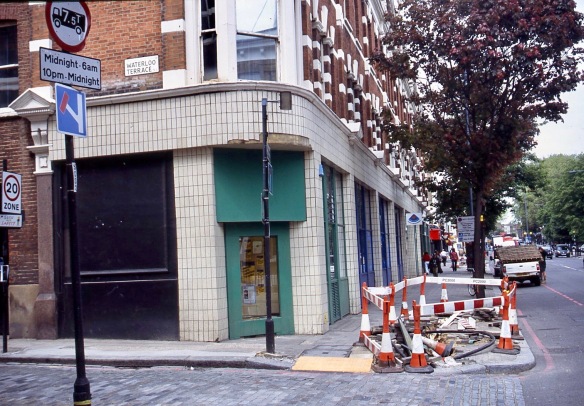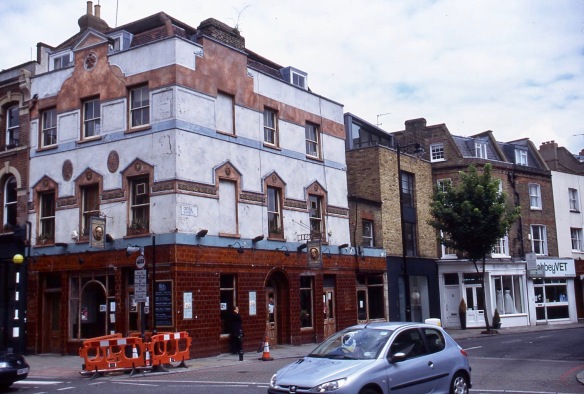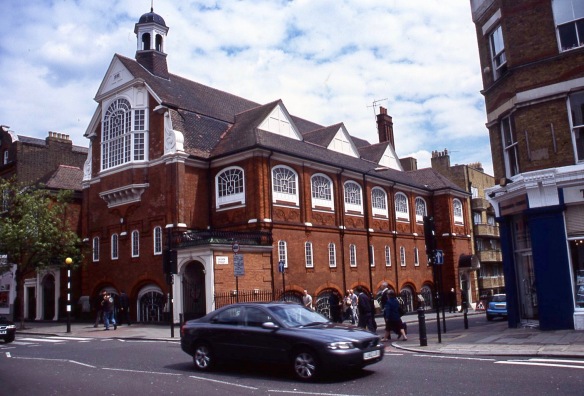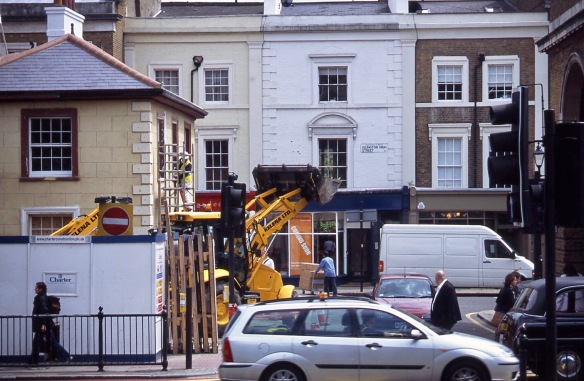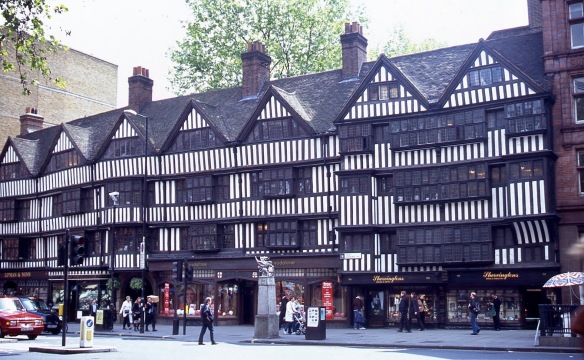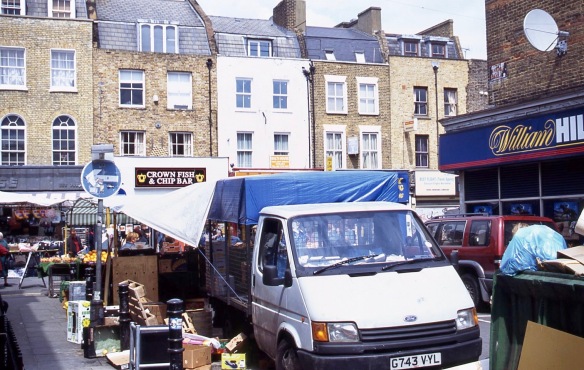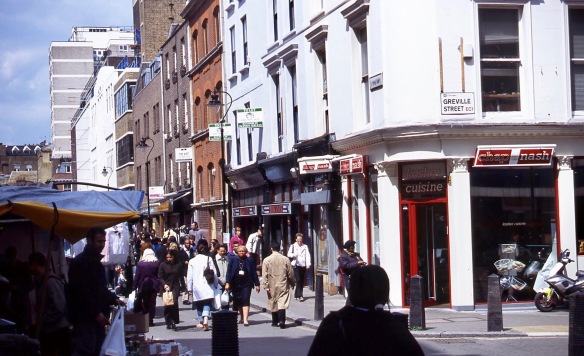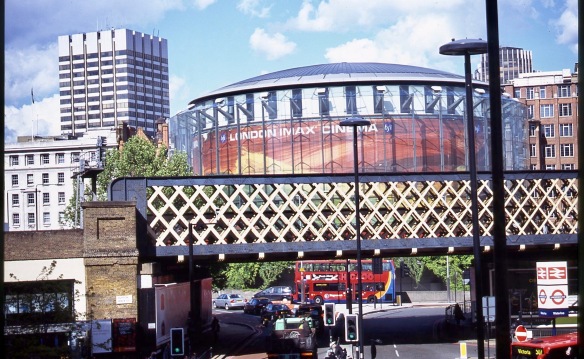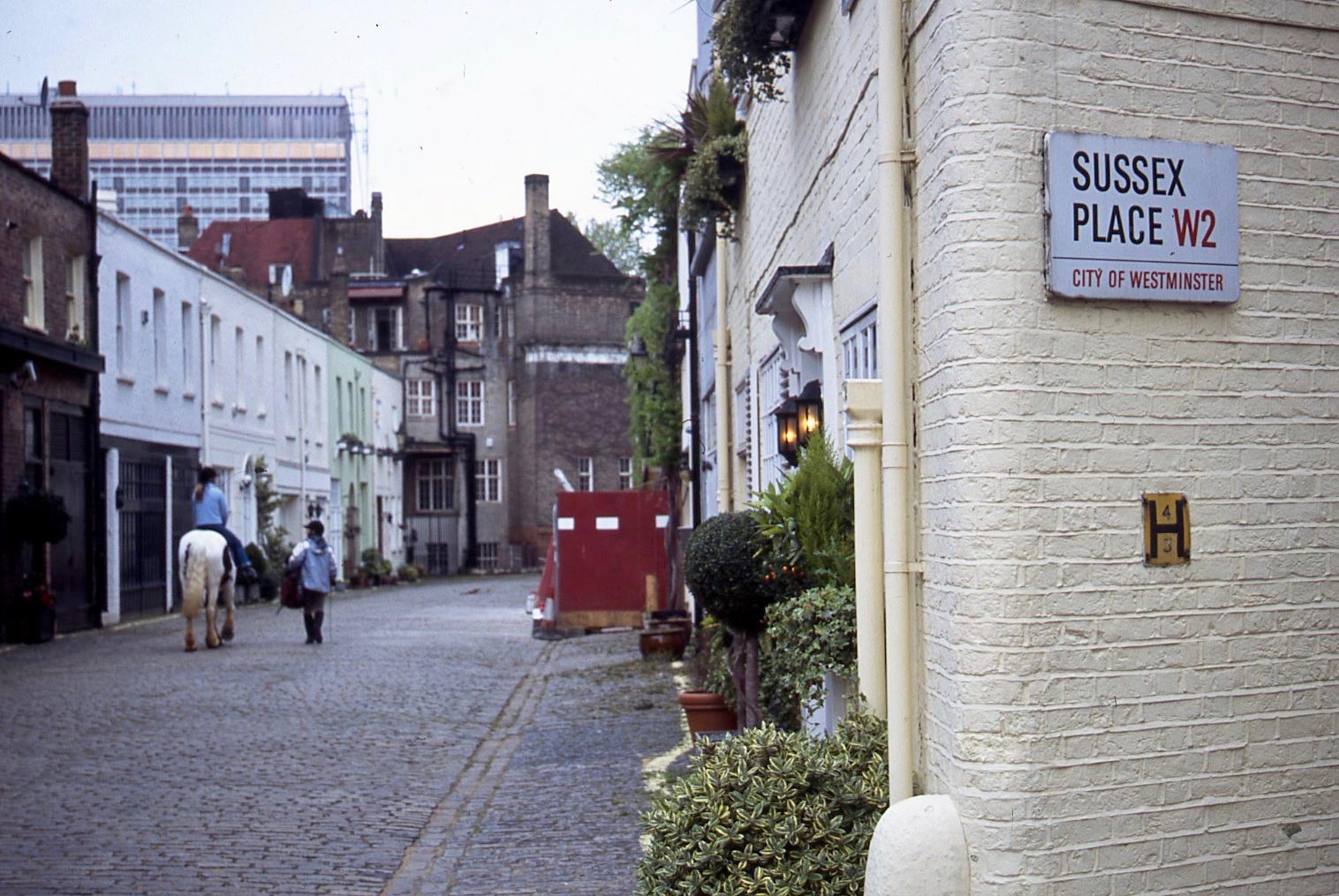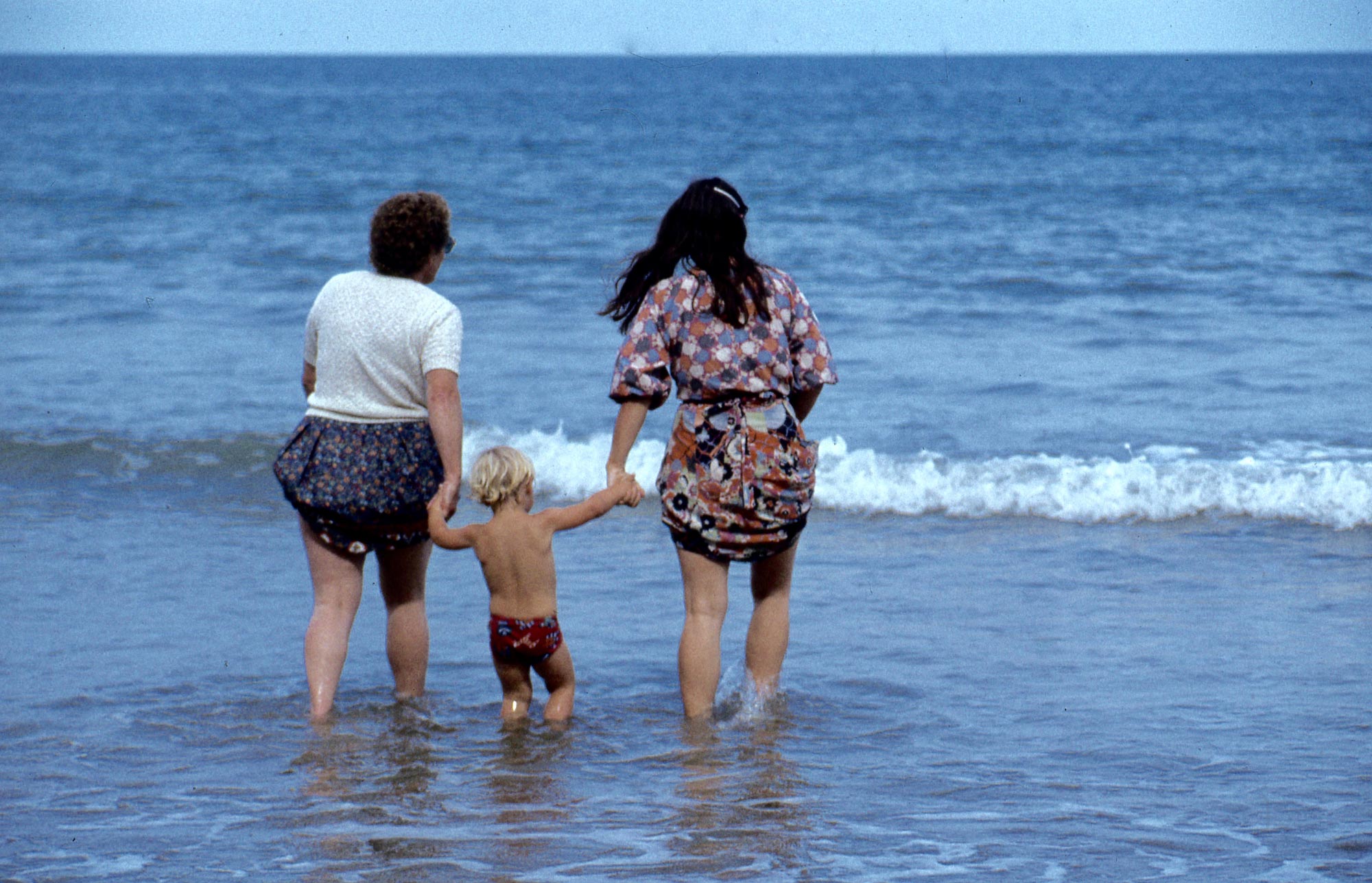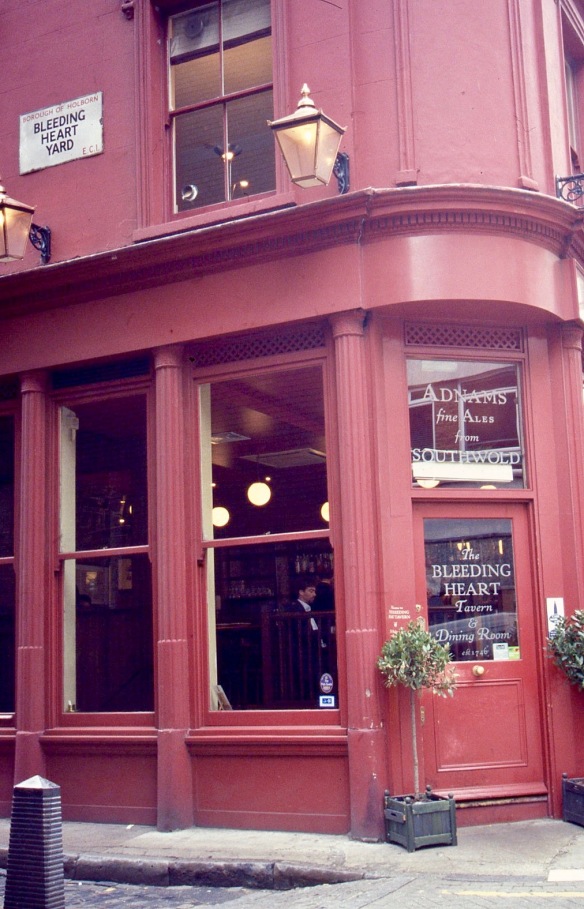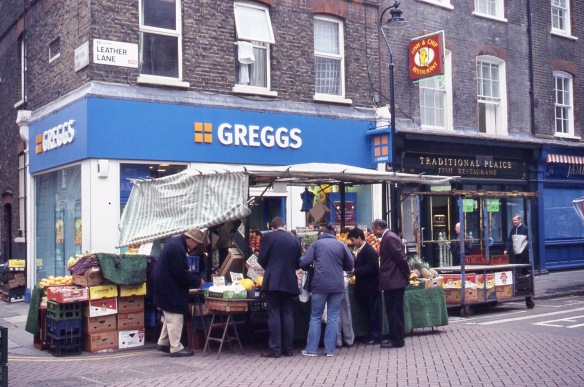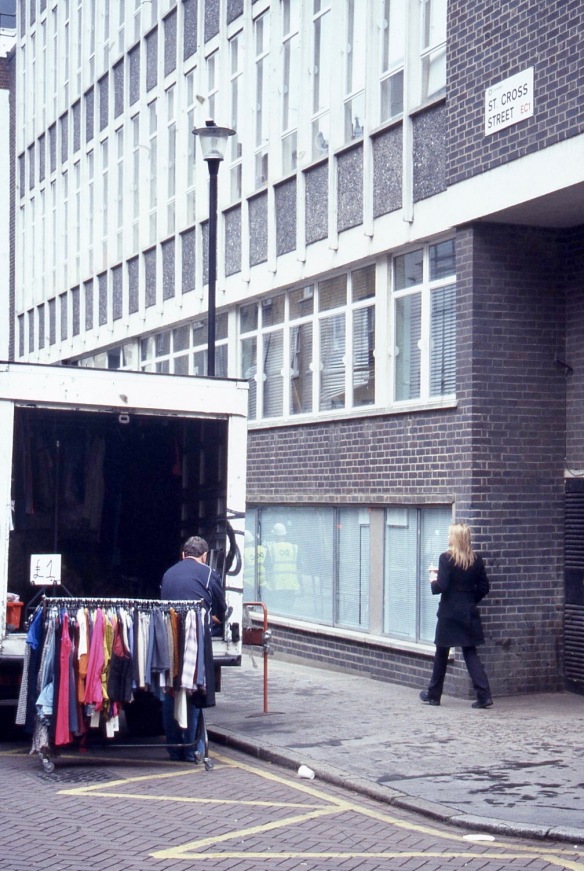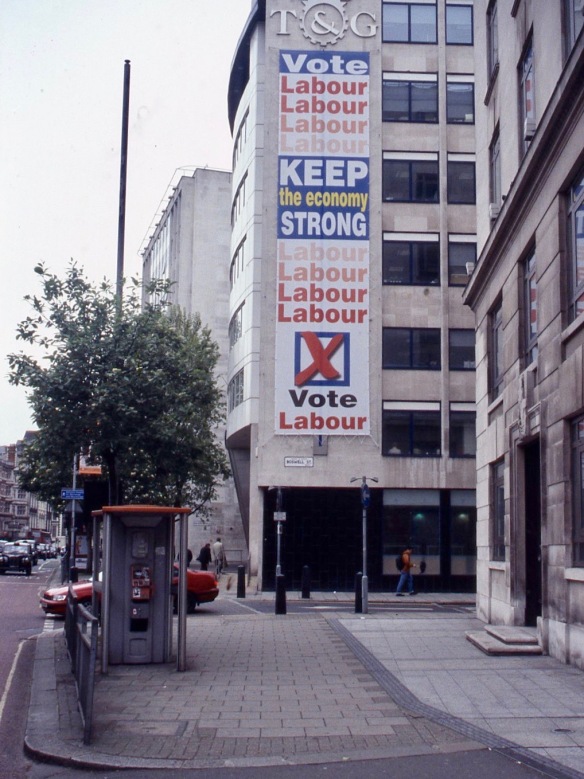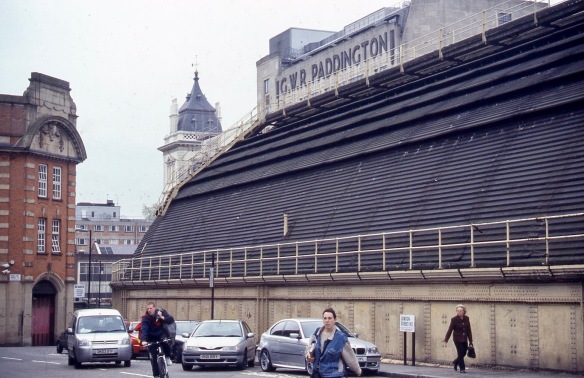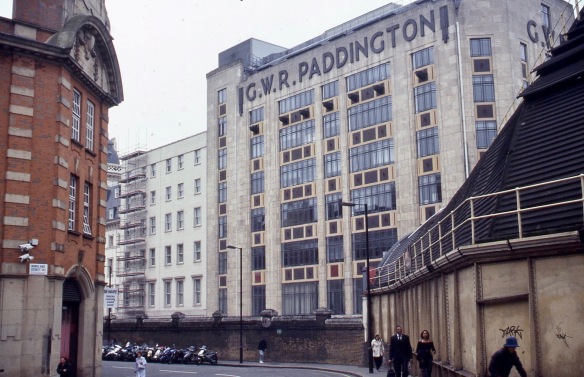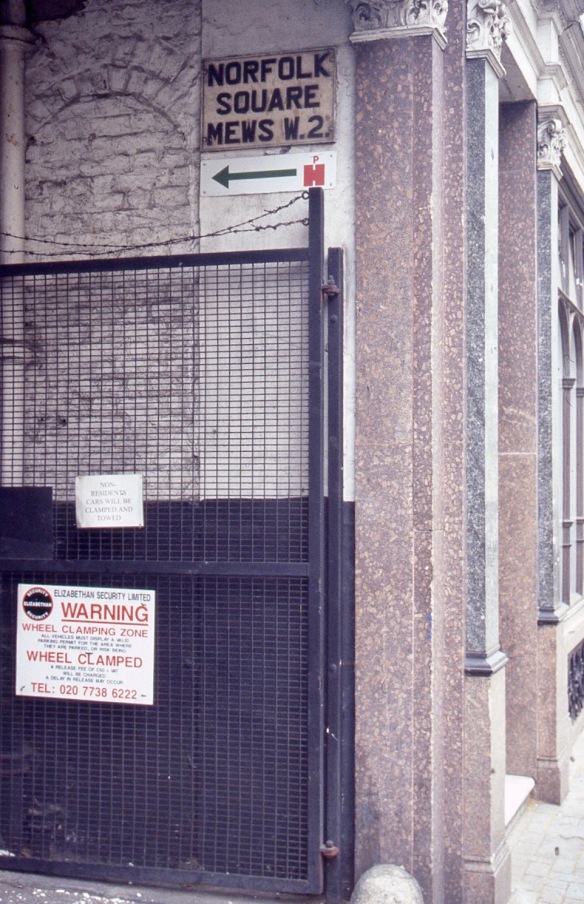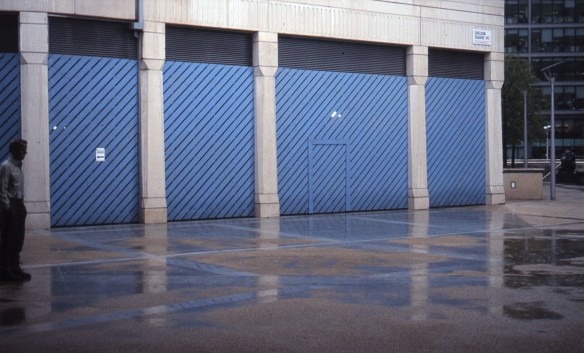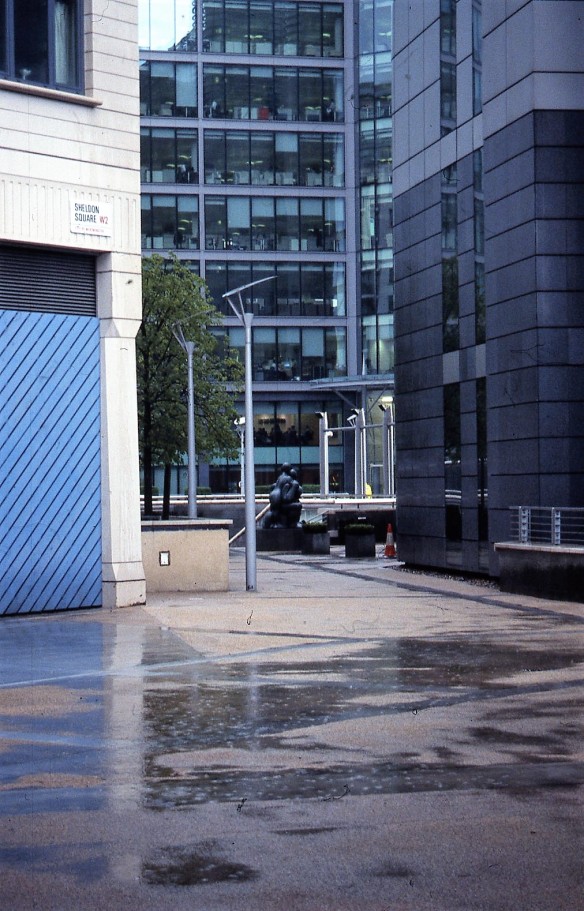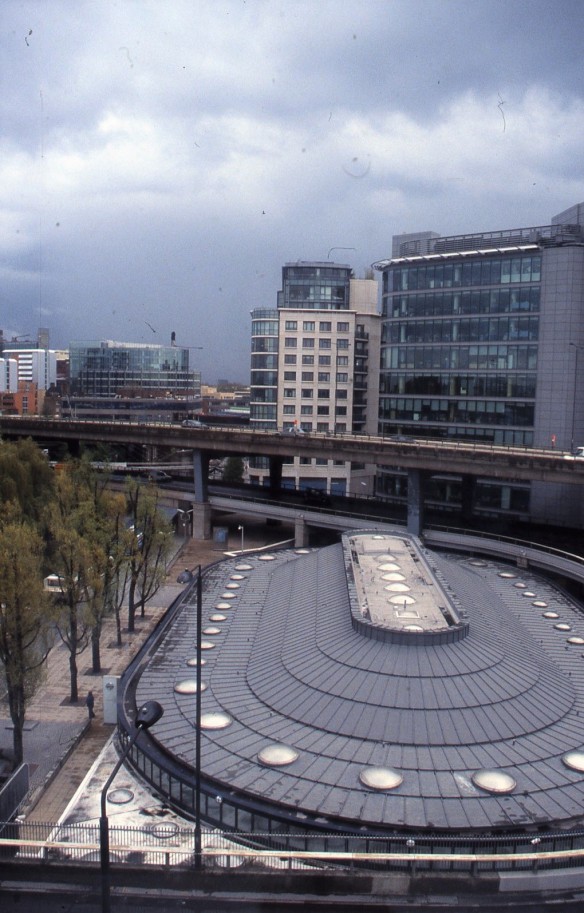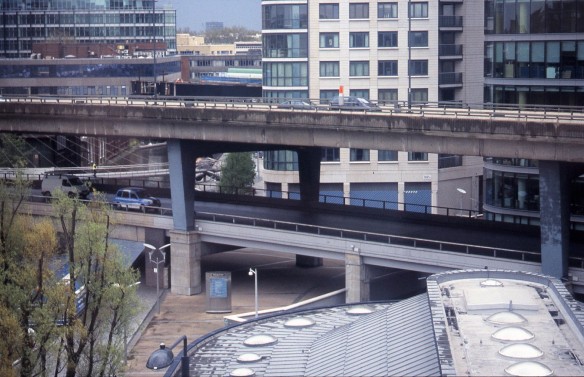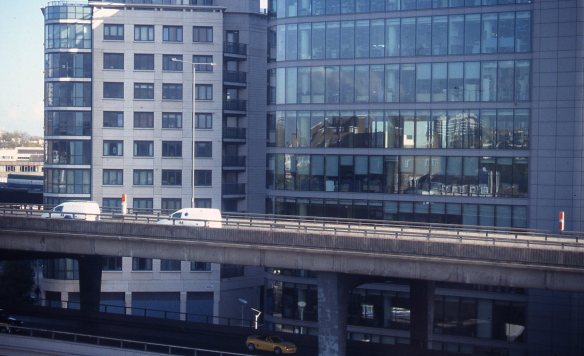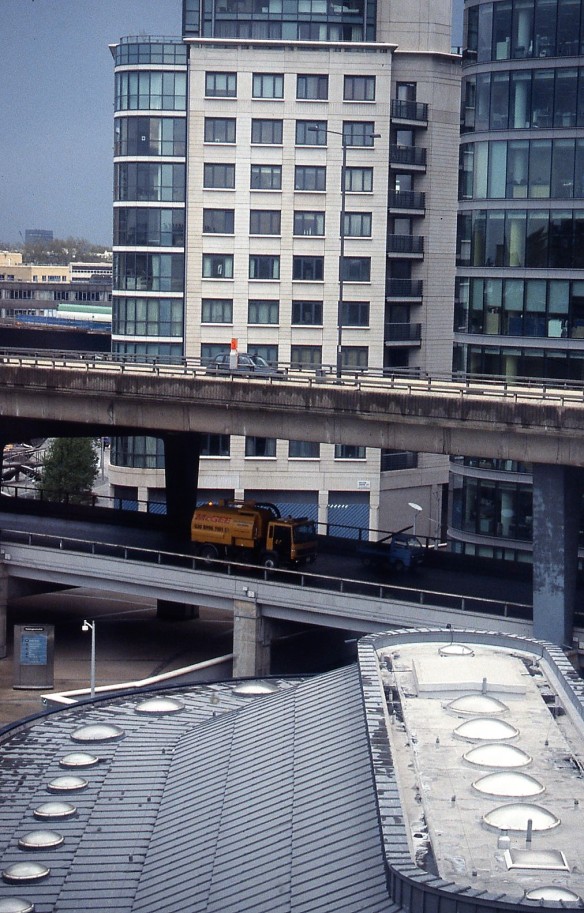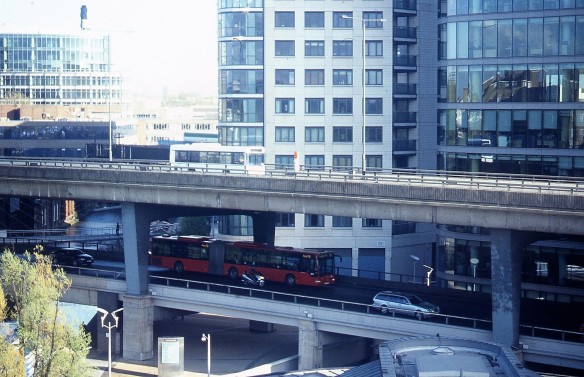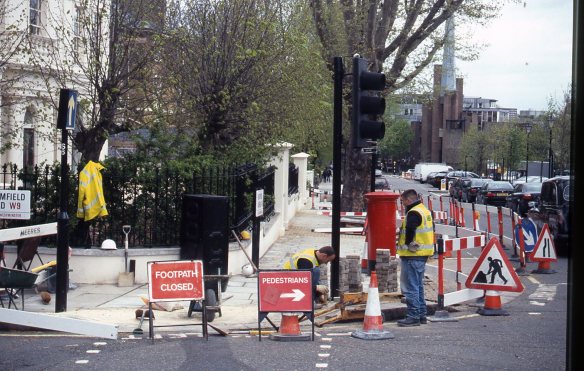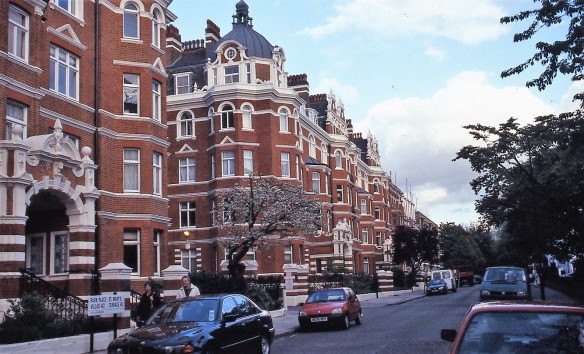THOSE IMAGES NOT IN A GROUP MAY BE ENLARGED BY CLICKING ON THEM. CLICKING THOSE IN GROUPS GIVES ACCESS TO GALLERIES, INDIVIDUAL MEMBERS OF WHICH CAN BE VIEWED FULL SIZE BY SCROLLING DOWN THEIR PAGES AND CHECKING BOXES AT BOTTOM RIGHT
Treacherous snow and ice lying on the ground today kept us inside and prevented Richard from getting his van out of his drive until mid afternoon, so I decided to visit The Streets of London. Trains were not running so this was achieved through the medium of a batch of colour slides from June 2005.
The Hilton Hotel Paddington is actually in Praed Street, on the corner of Harrow Road, WC2. Paddington Walk, revealed when the large van had passed on, was still under construction at the time I made these pictures.
Still in WC2, Covent Garden Tube Station, opened in 1906, stands on the corner of Long Acre and James Street.
Floral Street is at the other end of James Street. Many scooter riders have their directions perched on a board in front of them.
The brass number plate at 80 Strand, on the corner of Carting Lane, WC2 clearly receives regular polishing.
Arundel Street, WC2 shares a corner with Temple Place, on which is sited Temple Underground station.
Along Victoria Embankment
lies Savoy Place where stands a memorial to Michael Faraday at the edge of Victoria Embankment Gardens.
There we find another, depicting the Muse of Music, celebrating Sir Arthur Sullivan. I know my self-imposed restraint on this series of photographs is that they must contain the street sign, but on this occasion I couldn’t help myself.
https://memoirsofametrogirl.com/tag/memorial/ tells us:
‘Sitting on reclaimed land on what used to be the River Thames stands Victoria Embankment Gardens. It’s a small pocket of greenery in the West End just a stone’s throw from the waterways located beside Embankment tube station. For many workers and tourists, it’s a nice place to have lunch, but it is often passed by. As well as playing host to a café and summer lunchtime concerts, the Gardens also feature a collection of monuments to the great and good.
One such monument is the Grade II listed memorial to legendary composer Sir Arthur Sullivan. Situated in the slimmer part of the gardens nearer to the north-eastern exit, it is located looking towards The Savoy Hotel. Sullivan and his frequent collaborator, dramatist WS Gilbert were closely linked to The Savoy Theatre, which was built by their producer Richard D’Oyly Carte in 1881 using profits from their shows. Gilbert and Sullivan’s last eight comic operas premiered at The Savoy Theatre, so it is only fitting that the Sullivan memorial is so nearby. Eight years later, The Savoy hotel opened next door, also built from profits of their opera The Mikado, which had premiered at the theatre four years previously.
Lambeth-born and Chelsea-raised Sullivan is widely recognised as one of the greatest English composers. Although best known for his operatic collaborations with Gilbert, he also wrote many operas, orchestral works, ballets, plays and hymns, among other musical compositions alone. Among his work with Gilbert included HMS Pinafore, Patience and The Pirates Of Penzance. Following an incredibly successful career and a knighthood in 1883, Sullivan died at his London flat of heart failure on November 1900, aged 58. Despite his wishes to buried with his parents and brother at Brompton Cemetary, Queen Victoria ordered he was to be laid to rest at St Paul’s Cathedral.
Nearly three years after his death, Welsh sculptor Sir William Goscombe John’s memorial to Sullivan was unveiled in Victoria Embankment Gardens by Princess Louise on 10 July 1903. The monument features a weeping Muse of Music, who is so distraught her clothes are falling off as she leans against the pedestal. This topless Muse has led some art critics to describe the memorial as the sexiest statue in the capital. The sculpture is topped with a bust of Sullivan, with an inscription of Gilbert’s words from The Yeoman Of The Guard inscribed on the side: ‘Is life a boon? If so, it must befall that Death, whene’er he call, must call too soon.’ At the bottom of the pedestal is a mask of Pan, sheet music from The Yeoman Of The Guard and a mandolin inscribed with W Goscombe John A.R.A. 1903.
Meanwhile, if you come out the Gardens and cross the road, there is a memorial to his former writing partner Gilbert on the retaining river wall. It features a profile of the dramatist, two females, two wreaths and a shield. It reads: ‘W.S. Gilbert. Playwright and poet. His Foe was Folly, and his Weapon Wit.’ Gilbert died May 1911 after suffering a heart attack in the lake of his Harrow Weald estate while trying to rescue the artist Patricia Preece, who was 17 at the time.’
This crossing in SE1 leads from Sutton Walk to Waterloo Station, which, had I gone up by the non-running train, would have carried me back to New Milton.
So slippery was it in our inclined drive that, when Richard did manage to arrive, he needed to lay a large dust sheet over the icy surface in order to carry in his tools and equipment.
He installed the extractor fan;
switched the hinges and lighting buttons of the doors of the fridge freezer, which, of course, involved drilling precise new holes;
and set it in its allocated space beside the ovens, from which he burnt off the insulation.
Plaster in various places was prepared for later smoothing.
We were so iced in this evening that it wasn’t even safe to walk along to The Royal Oak. I may not have mentioned before that we are not blessed with adequate street lighting. So it was instant vegetable soup and egg mayonnaise sandwiches for our dinner, with which Jackie drank Hoegaarden and I drank Doom Bar.
